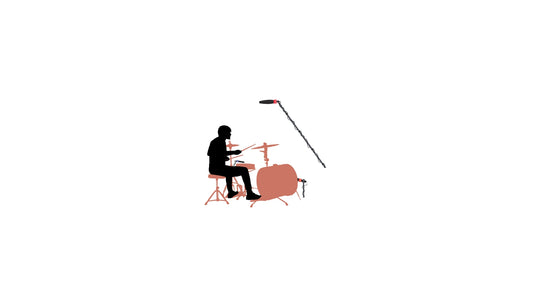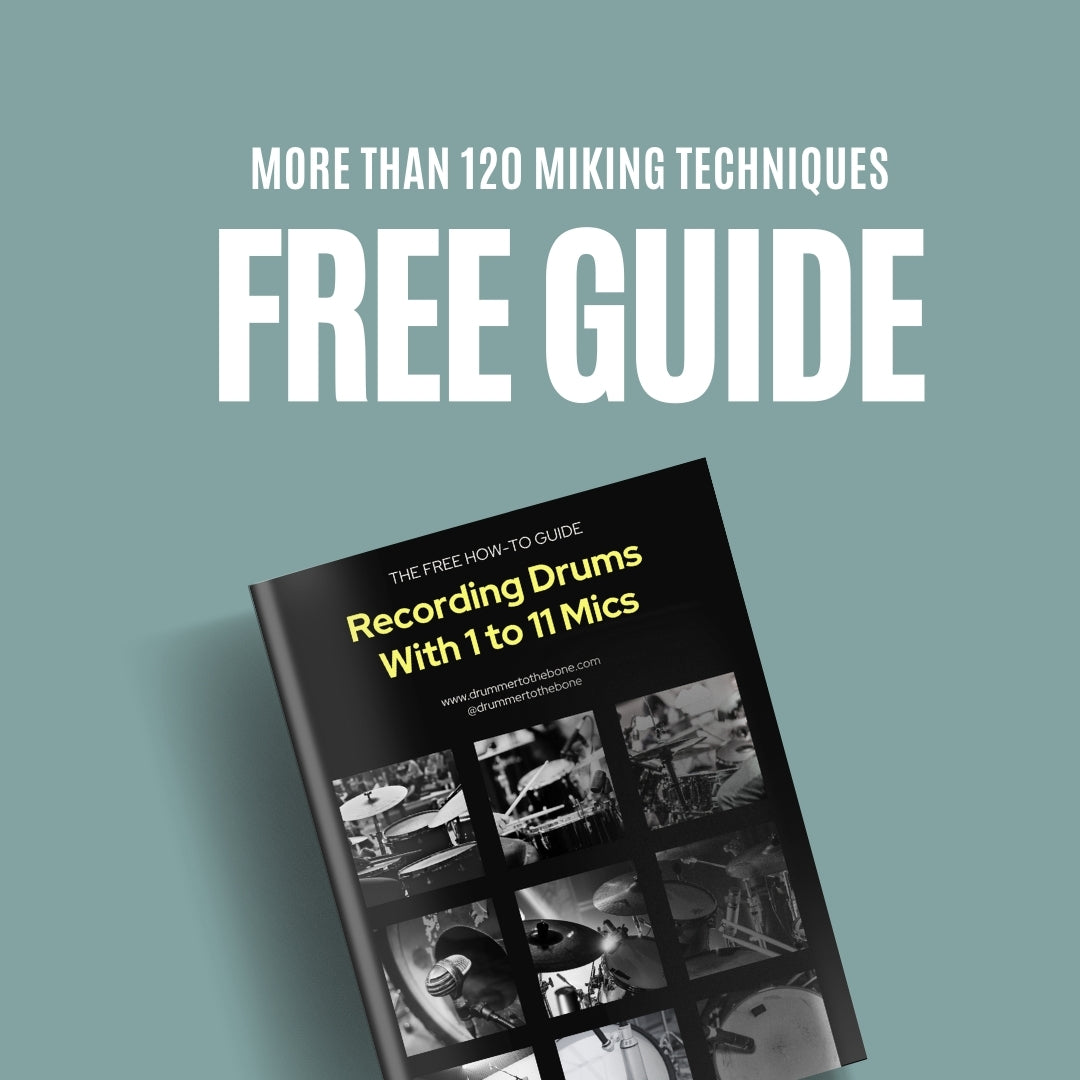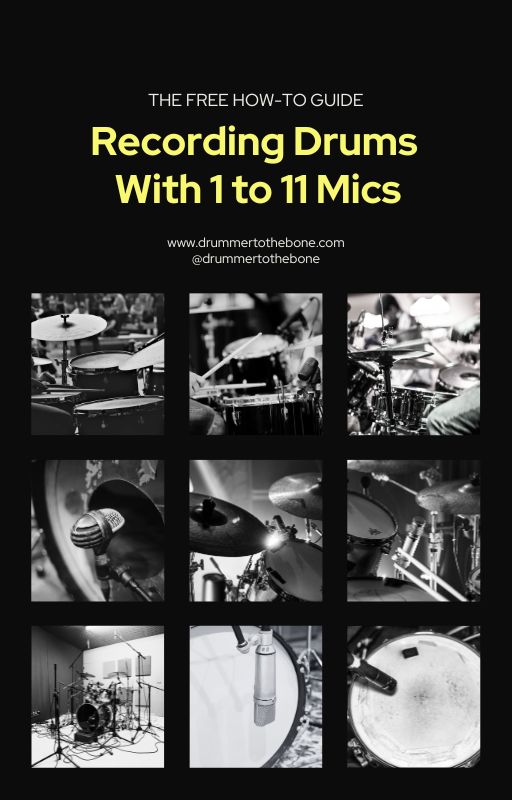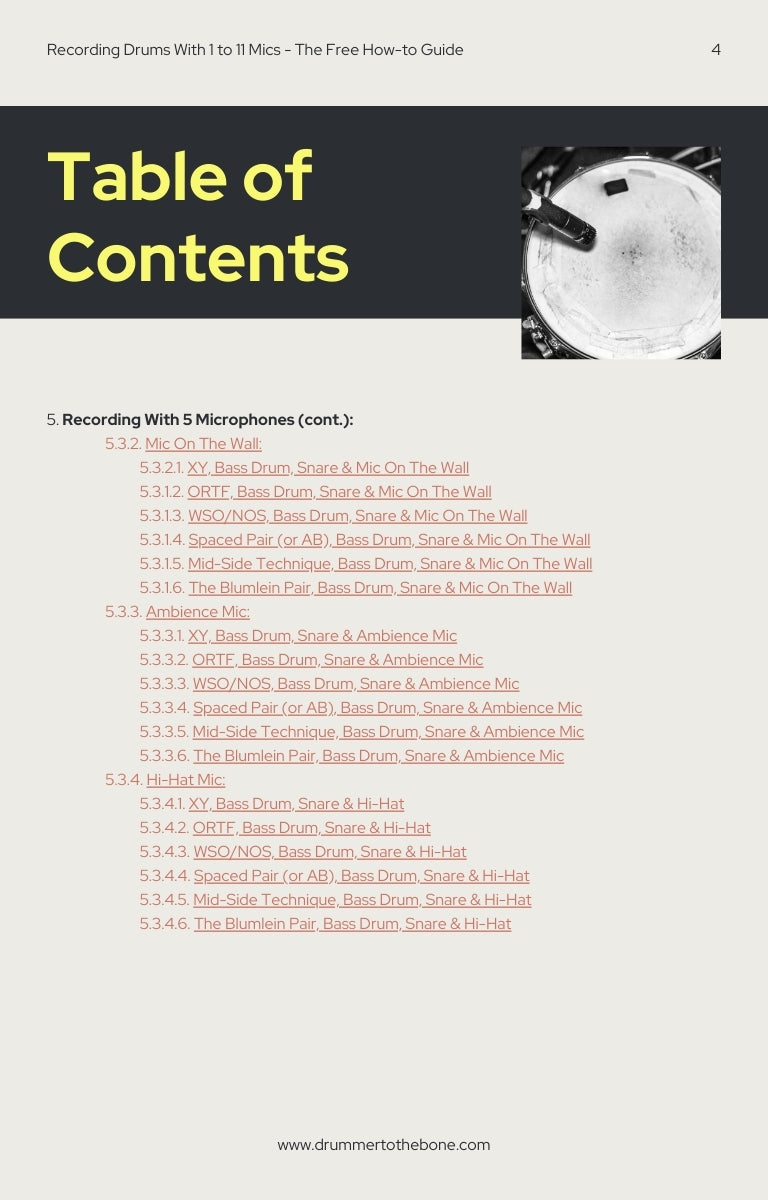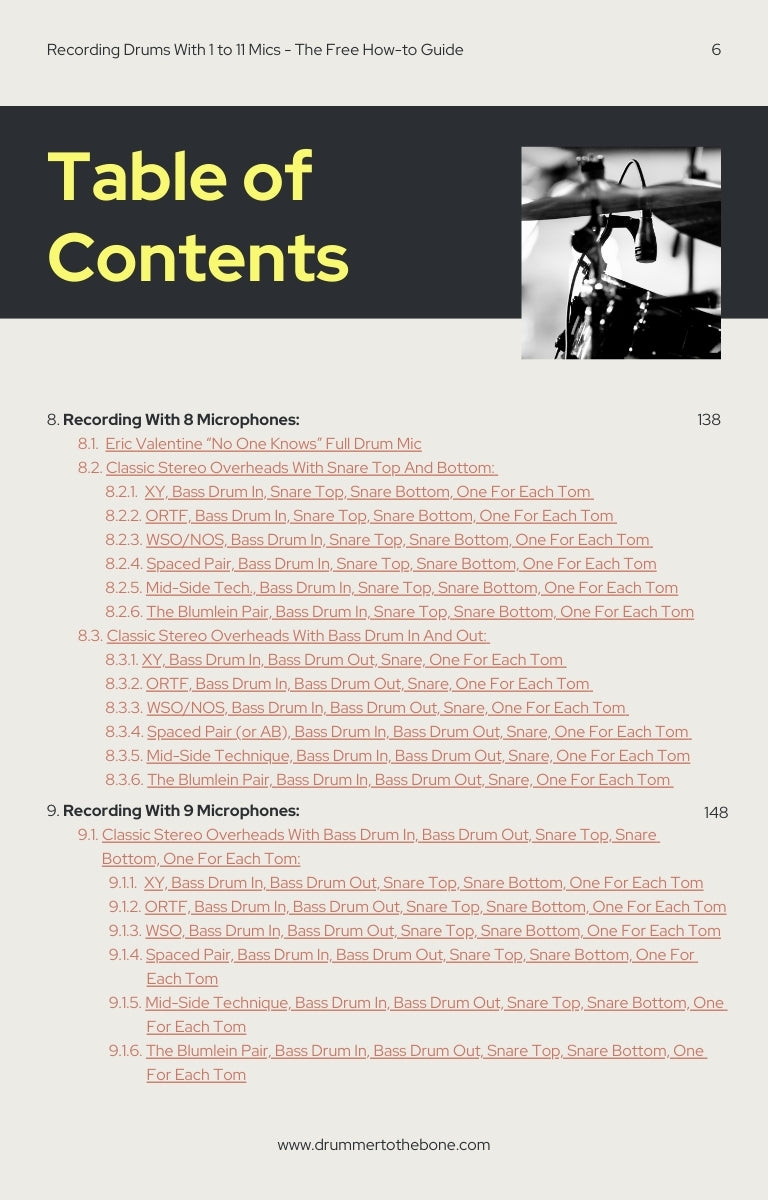First of all, make sure your toms are in-tune. Toms can determine the sound of a record, so make sure they sound great on their own acoustically before microphones are placed.
 The usual approach to miking toms is:
The usual approach to miking toms is:
- Start with about 3 fingers in height from the head, and depending on what sound you’re looking for, you can start adjusting.
- Point the microphone at the center of the drum, starting at a 45° angle. You can experiment with angles, but I wouldn’t go lower than a 20° angle (towards being flat with respect to the batter head).
- In terms of type of microphones, there are a number of options:
- Classic approach: Many engineers swear by the Sennheiser MD 421 and won’t use any other mic for toms. A large-diaphragm cardioid pattern mic, it has a very good low-frequency response and good feedback rejection. This is one of the most classic mics ever for drums. It even has its own Wikipedia page.
- Dynamic mics: You can never go wrong with a Shure SM57, can you? A SM57 would probably make more sense on rack toms, the smaller the better. For a floor tom, some swear by the Electro-Voice RE20.
- Some engineers prefer miking toms with condensers, others with dynamics. It is really a matter of taste. Your mic availability and taste should dictate what you use.
- If you are miking with condensers, you might want to use the “pad” option that some of them have. This “pad” reduces the intake by ~ 10 dB, avoiding distortion. What is a “pad”? Check out this video for a more detailed explanation.
If you have the mics and the inputs, you can add a bottom mic to the toms. A bottom tom mic will help with tone and depth definition. If you are placing a bottom mic, try to have the following in mind:
- When miking the bottom head, use the same approach as the top head. As a way to start, place it at the same level and angle as your top microphone.
- Usually, don’t put a mic at the center of the bottom head of a tom (either rack or floor tom). The reverberations and overtones are probably not going to be helpful with a good sounding tom.
- You might have to reverse the polarities of one of the mics (usually bottom one) to get the most of a 2-mic'd tom.
- The bottom microphone tends to give the toms a lot of depth and more sustain, a more realistic sound—given that you’re actually listening to both heads, just like you do when you’re playing them!
For further reference, you can check out this short video on miking toms from top and bottom and hear how the sound changes from one mic to the other.




